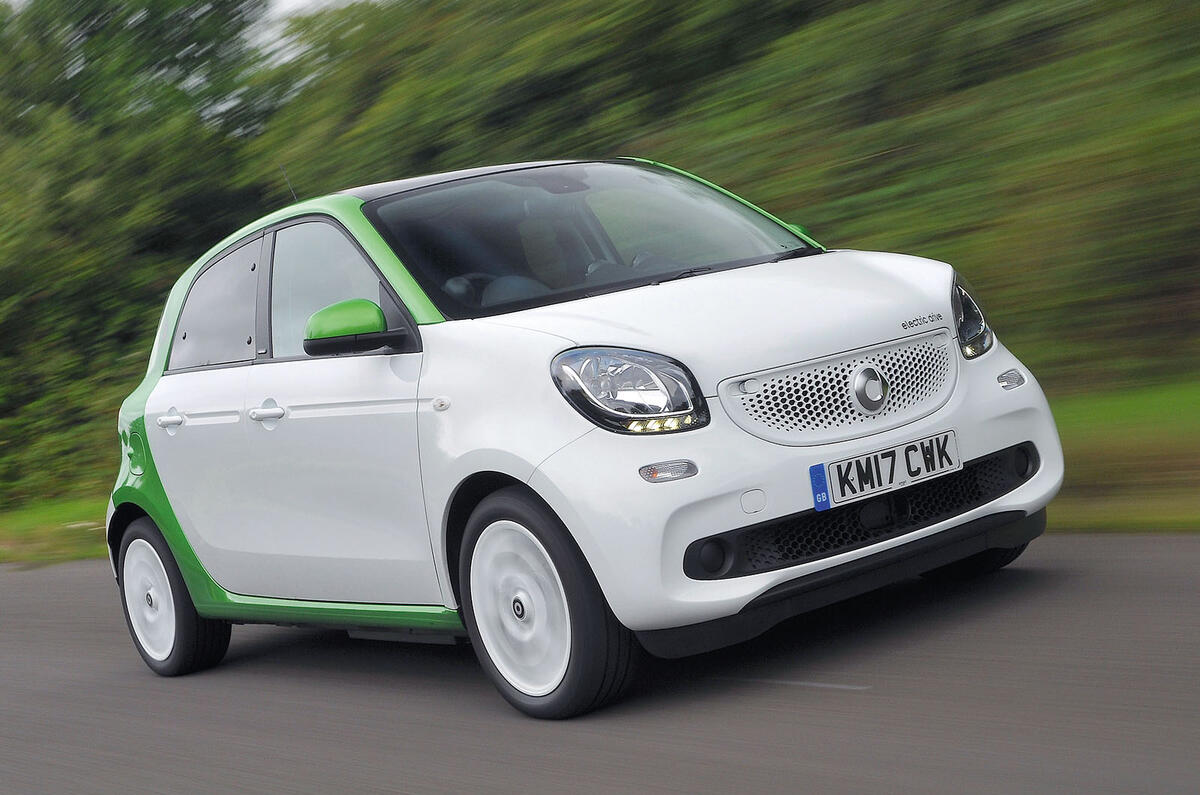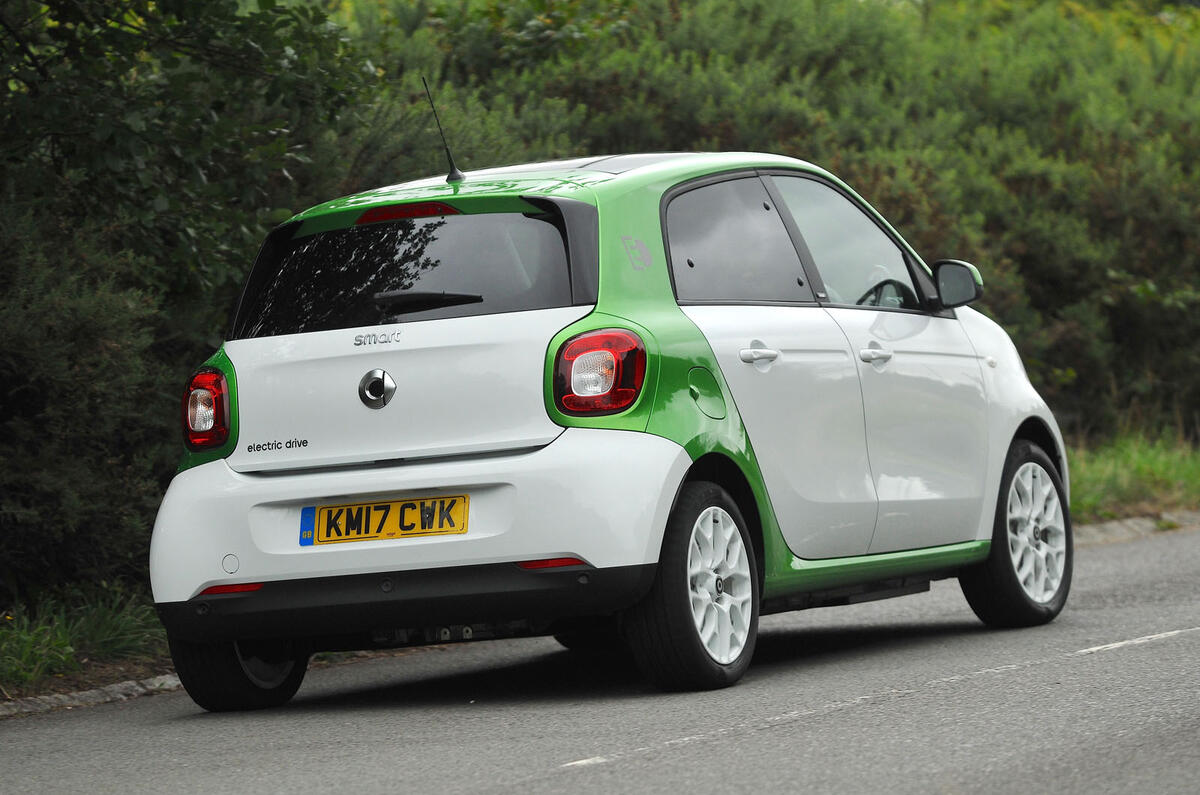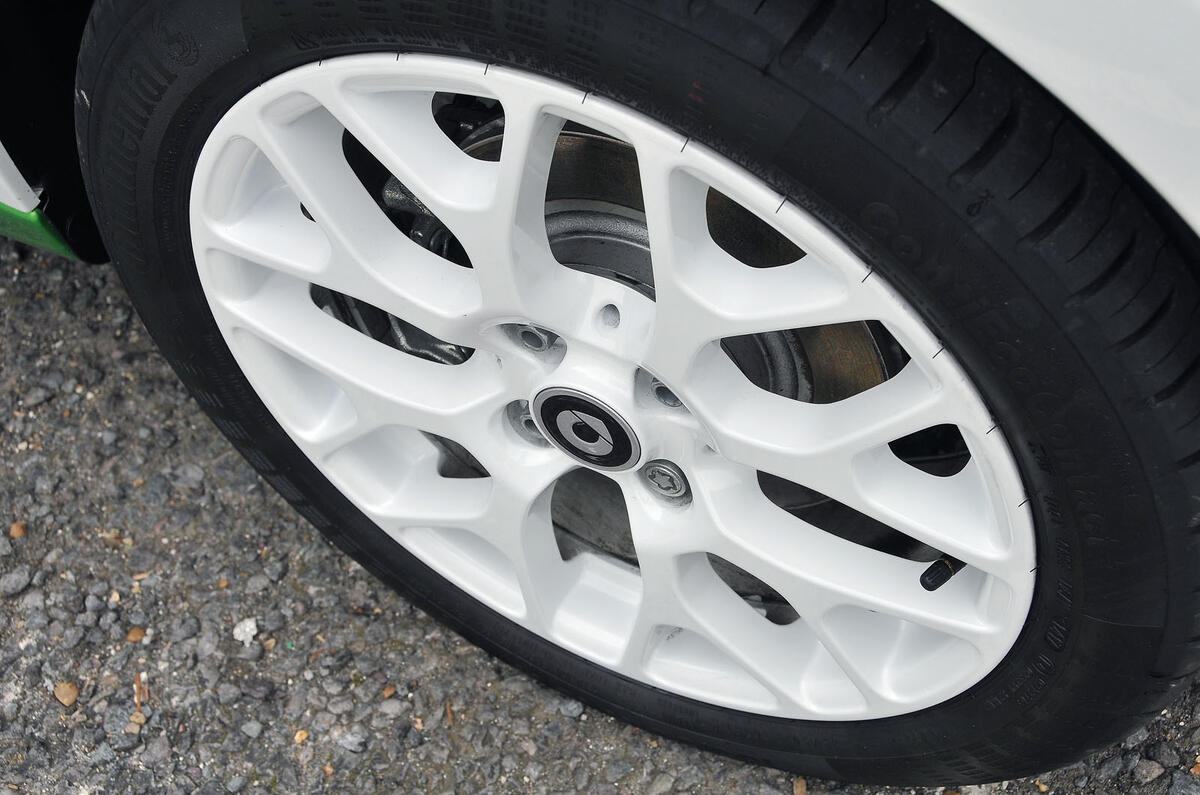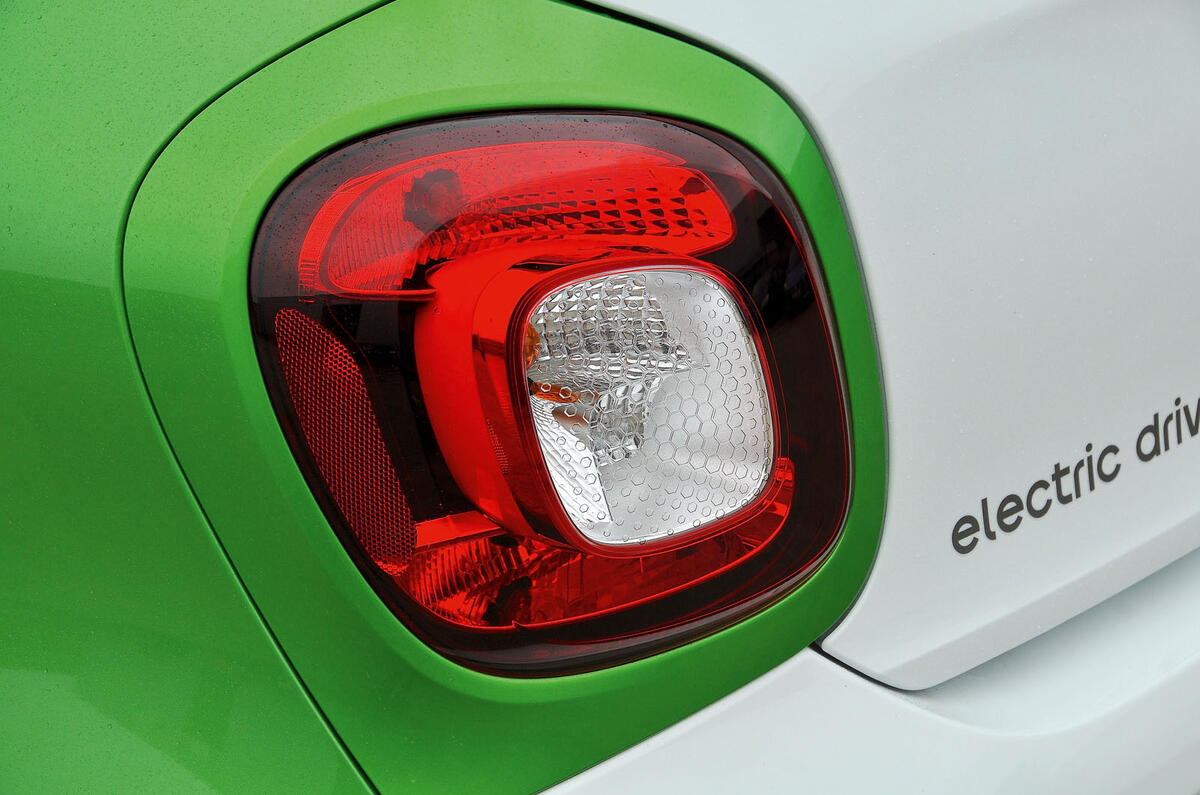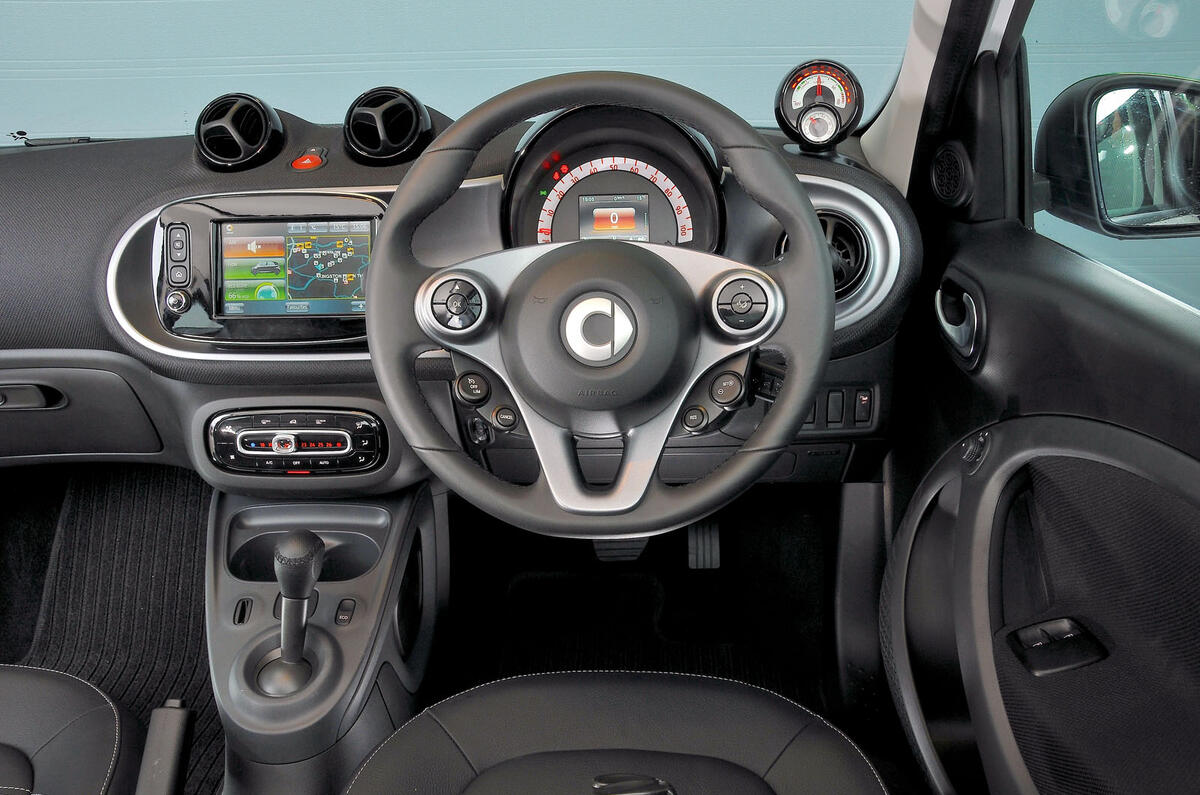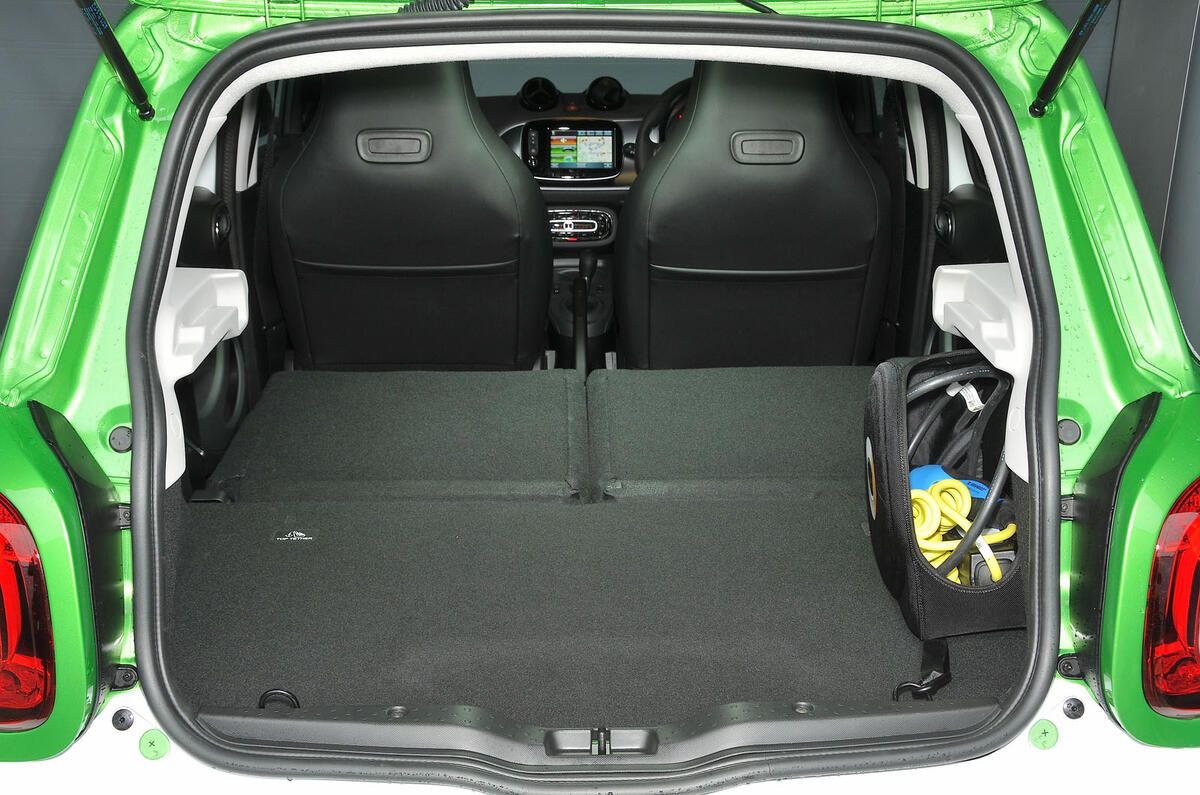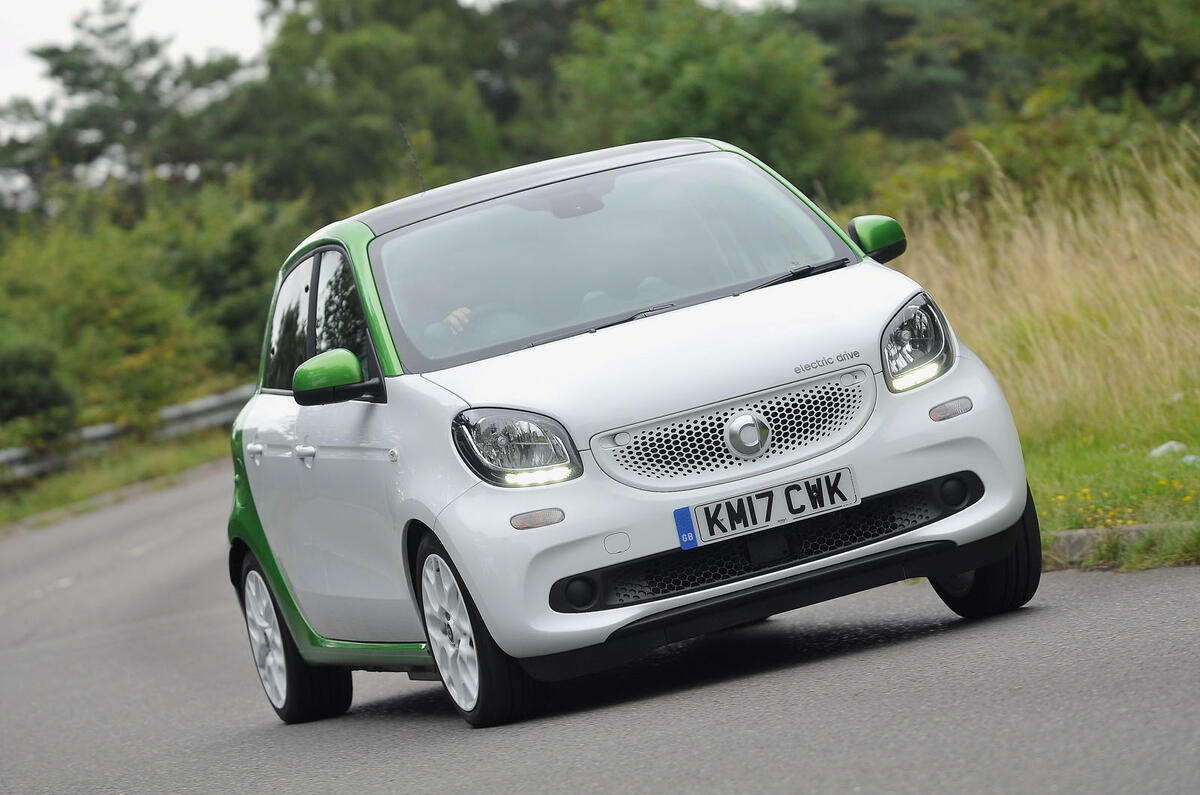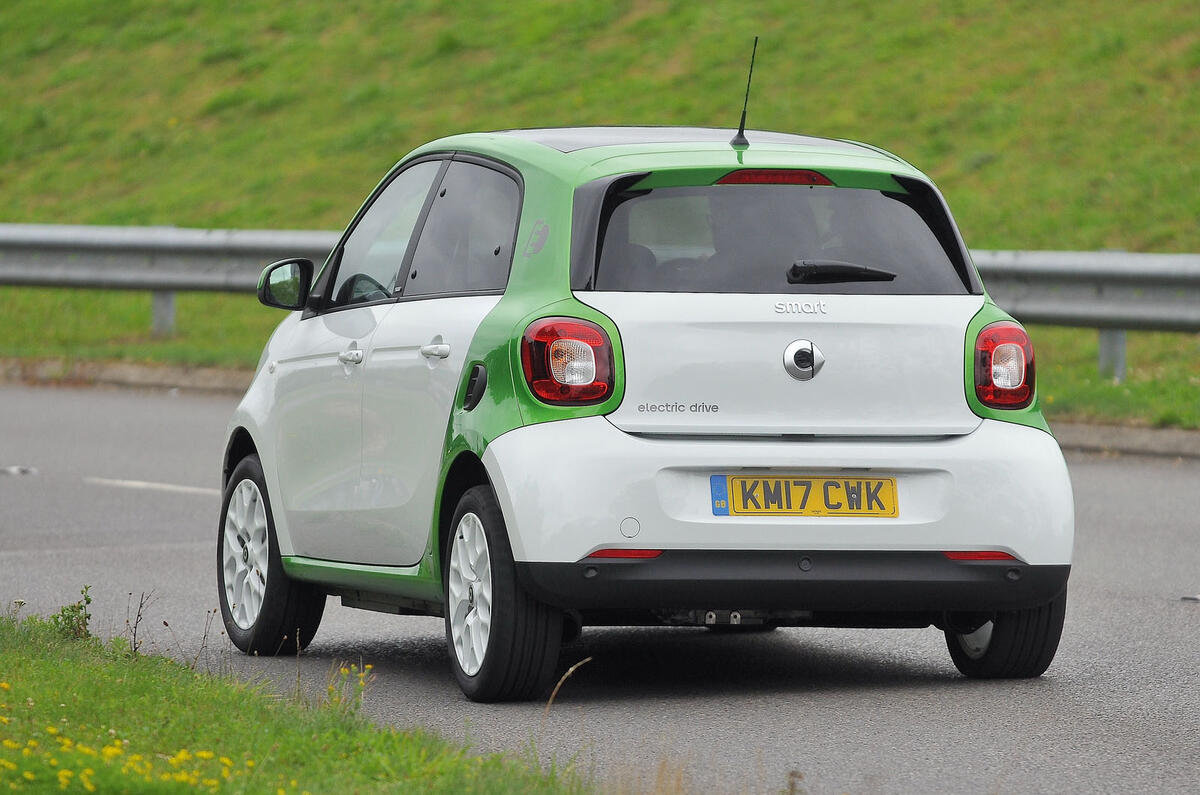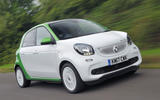Daimler’s joint venture with Renault has split its Smart brand’s production base once again, the two-seat Smart Fortwo Coupé and Cabriolet being built at its long-time factory in Hambach, Germany, but its four-seat Forfour being made in Renault’s Novo Mesto plant in Slovenia alongside the related Renault Twingo.
Unlike its direct predecessor, though, the Forfour is ostensibly a stretched Fortwo. At just under 3.5m in length, it’s small even by city car standards – just as you’d hope a Smart would be – and because its front wheels are unencumbered by having an engine stuck in between them, it also has a 9.1m turning circle, which is a good 10 percent tighter than the average supermini’s.
Where piston-engined Forfours are concerned, customers can choose between 70bhp 1.0-litre normally aspirated, 89bhp turbocharged 0.9-litre and 108bhp 0.9-litre turbo petrol engines – all of them cradled underneath the boot floor and driving the rear wheels.
In this Electric Drive version, the space the petrol engine would otherwise occupy is taken by an 80bhp, 118lb ft AC synchronous electric motor, which drives the rear wheels through reduction gearing.
The motor draws its power from a lithium ion drive battery housed under the cabin floor, with 17.6kWh of storage in all.



